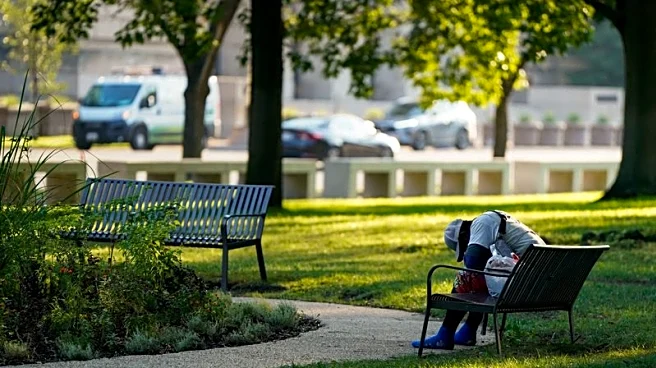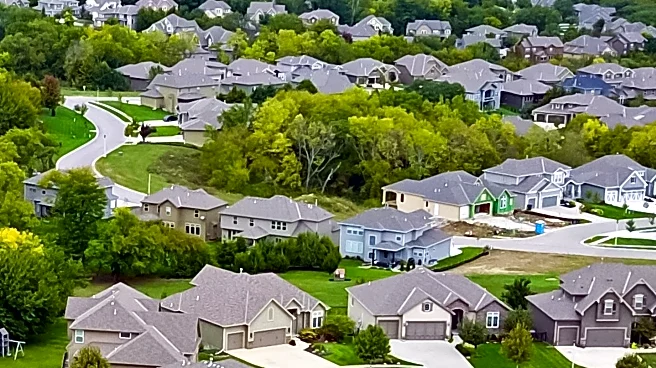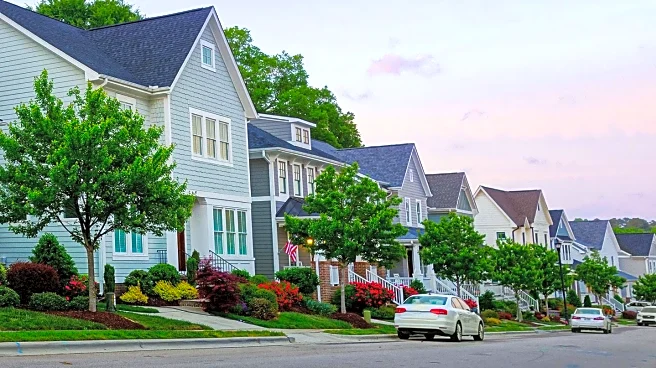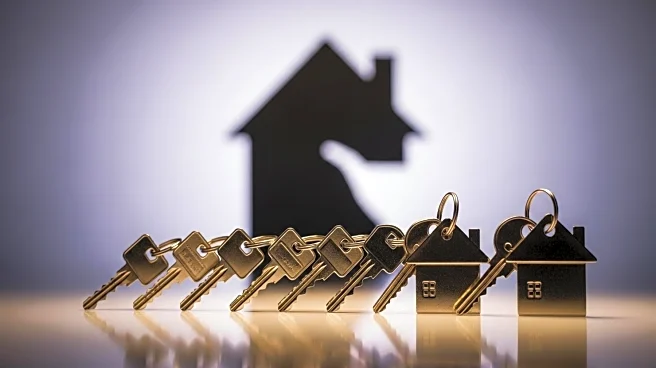What is the story about?
What's Happening?
The Census Bureau has released new data indicating that monthly mortgage payments in the United States have reached their highest levels in decades. The median monthly cost for homeowners, which includes mortgage, insurance, real estate taxes, and other fees, rose to $2,035 in 2024, up from $1,960 the previous year. For those who moved in 2024, the median mortgage payment was $2,225, significantly higher than the overall median of $1,521. Renters also faced increased costs, with median rent rising by 4.1% to $1,307. These figures highlight the growing financial burden on Americans seeking housing, exacerbated by stagnant median incomes and limited housing supply.
Why It's Important?
The rising costs of homeownership and renting are significant as they place a financial strain on many Americans, potentially keeping homeownership out of reach for a large segment of the population. High mortgage rates, increased insurance premiums, and homeowners association fees contribute to this affordability crisis. The stagnation of median incomes further widens the gap between earnings and housing expenses, impacting the ability of individuals to save for home purchases. This situation could lead to slower home sales and a decrease in economic mobility, affecting the broader U.S. economy and housing market stability.
What's Next?
The ongoing affordability issues may prompt policymakers to address housing supply constraints and consider measures to stabilize mortgage rates. Homeowners and renters might seek alternative housing solutions, such as downsizing or relocating to areas with lower costs. The trend of purchasing homes with cash could continue among wealthier individuals, potentially influencing market dynamics. Stakeholders, including real estate professionals and economists, will likely monitor these developments closely to assess their impact on the housing market and broader economic conditions.
Beyond the Headlines
The affordability crisis in housing raises ethical and social concerns about equitable access to homeownership and the potential for increased socioeconomic disparities. As housing costs rise, the ability of lower-income families to secure stable housing diminishes, potentially leading to increased homelessness and community instability. Long-term shifts in housing policy and urban planning may be necessary to address these challenges and ensure sustainable development.
AI Generated Content
Do you find this article useful?














